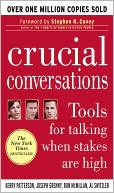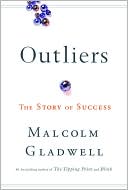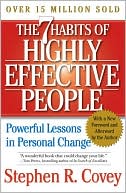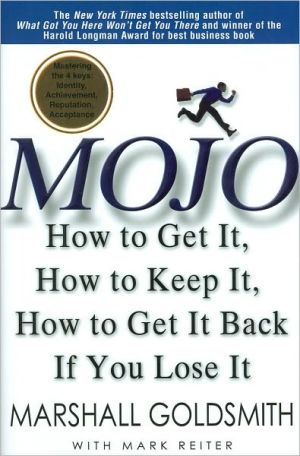Catch!: A Fishmonger's Guide to Greatness
The Pike Place fishmongers are almost as famous as the market they work at, lovingly profiled in the media and treasured by those who watch them go about their work each day with style and smiles. In Catch!, Cyndi Crother tells their story; or rather, lets them tell it, in this unusual combination of oral biography and business blueprint. Using the fishmongers’ examples, letting them explain their work lives and their personal lives, the book explores the issues of goals; both financial and...
Search in google:
With the bestselling "Fish!," Seattle's Pike Place Fish Market became famous both for its fascinating work culture and as a striking model for personal and business success. "Catch!" continues where "Fish!" left off, taking readers behind the scenes at the market for more life lessons. Library Journal The Pike Place Fish Market in Seattle has already been immortalized in the best-selling book and training film Fish and in various TV shows and movies. This newest work purports to be the "inside story" of what it is like actually to work at the market. It begins promisingly, with short biographies and pictures of each employee. However, their stories are quickly overpowered by business and training jargon and a heavyhanded focus on the "guiding principals" reviewed at the end of each short chapter. The author, a quality control instructor and corporate trainer, has reduced the workers' stories to training points. A true book about the Pike Place Market would be welcome and very interesting, but this book is more a rehash of the personal development ethos than a look into a unique work environment. In other words, no fresh "fish" here.-Susan Hurst, Miami Univ. of Ohio, Oxford Copyright 2003 Reed Business Information.
Catch!\ A Fishmonger's Guide to Greatness \ \ By Cyndi Crother \ Berrett-Koehler Publishers, Inc.\ Copyright © 2004 Cyndi Crother and Fish Boys LLC\ All right reserved.\ ISBN: 978-1-57675-323-1 \ \ \ Chapter One\ A Day in the Life of World Famous Pike Place Fish\ Cast of Characters\ Throughout this book, you will be reading stories from each of the fishmongers, so it might help to know a little bit about them. Johnny Yokoyama purchased Pike Place Fish in 1965 and used to work at the Market with the guys. These days the fishmongers pretty much keep the fish flying on their own; however, Johnny remains actively involved in coaching the crew and in leading them into an exciting and inspiring future.\ Dicky Yokoyama, Johnny's brother, started working at Pike Place Fish over twenty years ago and is presently one of the managers. Samuel "Sammy" Samson is the other manager, but you usually can't see him because he's moving so darn fast! Keith Bish, otherwise known as "Bear," was the driver and utility person for years; now you can find him working at the king salmon display. Justin Hall has been working at Pike Place Fish since he was thirteen years old. He has been there for thirteen years, and his claim to fame is being in the Guinness Book of World Records for the most fish thrown in a minute.\ Jaison Scott was practically born at the Market, and he has worked at Pike Place Fish for seven years. He is well known as an outstanding drummer for Severhead, a hard-driving Seattle band. Darren Kilian has been with Pike Place Fish for five years; he can usually be found at the computer near the clam and mussel displays, putting together many of the Internet orders. Dan Bugge, known to everyone by just his last name, has been with Pike Place Fish for three years. He is best known for throwing a fish into a baby carriage—with the baby still in it! Don't worry; the baby was okay, if a bit startled.\ Chris Bell currently is the utility person and driver. Every day he picks up the freshest fish available to mankind and keeps the rhythm going by making sure everything is well stocked. Andy Frigulietti came to Seattle from Boston and has worked with Pike Place Fish for nearly four years. He works in front of the crab and lobster displays with Erik Espinoza, who has worked at the Market for about two years. Erik has had the opportunity to travel to some interesting vacation destinations.\ Ryan Dehn, also known as "Bison," has worked on and off with Pike Place Fish for about three years. Hard to track down, Bison's always on the go and keeps all the displays well stocked. Anders Miller has been with Pike Place Fish for about three years and spends most of his time behind the counter (also known as "up on top"), catching and filleting the fish thrown his way. He also delivers orders to the hotels after the shop closes in the evening. Usually behind the counter with Anders is Jeremy Ridgway, a self-proclaimed expert-in-training who has been with Pike Place Fish for about one year.\ When he's not cruising around Seattle on his Harley, Russell Price works in front of the king salmon or crab displays and has been aboard for three years. Ben Bish, Bear's son, has been working part-time at Pike Place Fish since he was fifteen years old. He also generally works out in front, by the crab and shellfish displays or by the king salmon display.\ Matt Lewis, Doug Strauss, Dave Brooks, and Ryan Kimura also worked at Pike Place Fish while I was compiling the stories for the book. Matt and Dave are now attending college, Doug teaches high school locally, and Ryan moved to Las Vegas for another job opportunity. Each of them visits Pike Place Fish regularly, so you might see them at the Market as well.\ One thing to note is that each of the fishmongers is responsible for being able to do anything that is required —cross training at its finest! They each work up on top, answer the phones, work out in front, put together shipping orders, make deliveries—everything.\ Other contributing members of the cast are longtime consultant Jim Bergquist and his team, who help facilitate the process of creating goals and solving problems at Pike Place Fish.\ Catch! of the Day\ If you have not had the opportunity to visit Pike Place Fish, it might be helpful to know what a normal day looks like. Every day except Sunday begins at 6:30 a.m. (Sunday begins at 7:00 a.m.), when the fishmongers get into a huddle to discuss the goals for the day. They talk about how much inventory of each type of fish they have on hand and about what they want to accomplish on that day. The huddle ends with a loud, ceremonial "Aayyyyeeee!"\ After the huddle, each fishmonger sets up a different seafood display, called a "show." On a typical day, the shows include smoked, boxed, and king salmon, shellfish and crab, parrot fish and other exotic-looking fish, monkfish, clams and mussels, and oysters. While some of the fishmongers set up the displays in front of the counter, other fishmongers work behind the counter, cutting up the fillets and steaks for display behind the glass.\ Once everything is set up, the fishmongers hose down the walkways, clean the display case glass, and hang labels to identify the different types of fish. Many of the fillets and steaks look quite similar, and it takes a keen eye to distinguish between them. All the while, early-bird customers are making purchases. In addition to the fish products, customers buy "World Famous Pike Place Fish" T-shirts, sweatshirts, hats, and other goodies. As the day unfolds, increasing numbers of visitors and customers come to the Market, creating a lot of activity. The fishmongers move all day, taking orders off the phone and the Internet and shipping fish to every imaginable distant corner of the world.\ If you want to see the action from your home, check out the Pike Place Fish website and select webcam. One of the things you will see is that any time a customer places an order, the fishmonger serving him or her literally throws the fish about ten to fifteen feet to another fishmonger, who catches it while standing behind the counter. There is not a lot of room for error, but the fishmongers have become quite skilled at throwing crab, salmon, and even bags of clams. It is a well-synchronized process, and no one throws a fish until the fishmonger taking the order calls out the specific order to the others. Once the order is yelled to the crew, the crew responds by repeating the order aloud. Then the fish fly! Because of their communication system, it is rare to see the fishmongers make a mistake.\ Originally, the crew threw fish in order to avoid walking all the way to the counter to weigh a customer's order. However, customers and visitors got such a kick out of seeing fish fly that it has become a part of Pike Place Fish's culture. Sometimes customers even get in on the action, and while visiting the Market you might see someone try their hand at catching a flying fish. This usually gets many laughs from the watching crowd—those fish can be slippery!\ At 5:45 p.m., sharp, one of the fishmongers yells "five forty-five" to initiate the closing process. It takes approximately forty-five minutes to break down the displays and put away all the fish for the night. By 6:30, everything is stowed, and the crew gets into another huddle. They talk about how the day went in relation to the goals that were set in the morning huddle. They divide the tips they earned throughout the course of the day, and then they close shop. One of the fishmongers will then deliver orders to customers who are guests staying at the various local hotels.\ The Map and the Territory\ One thing that you may notice as you read through the fishmongers' stories is that sometimes their language seems a little odd. While the terms and jargon are catchy, the power of the stories does not come from the specific terms; it comes from the attitude and mental framework reflected in the terms. The language is simply a reflection of the concepts and underlying Pike Place Fish principles. Stocked displays at the Pike Place Fish stall\ The relationship between the language and the principles is analogous to a map and the territory a map depicts. A map is not exactly what the actual territory looks like, but it is nonetheless a depiction of the characteristics of the territory. The map represents a tool to help you understand what you might expect in the actual territory. The same is true of the language the fishmongers use: the language is simply a tool to understand the guiding principles that make the fishmongers effective in their lives and at work.\ Before we get started, Russell and Anders have the following introduction for you:\ Some of you may know who we are, and some of you may not. Whatever the case may be, we want to acknowledge you for supporting us and believing in what we stand for, for the commitment to yourself that led you to this book, and for your willingness to listen to some ideas that may be different from the ones you have now. We believe your willingness to be open to these ideas is the key to a future of infinite possibilities. Enjoy!\ Russell and Anders\ Chapter Two\ Ordinary to Great\ It's All over Here\ People from all over the world visit World Famous Pike Place Fish to be jazzed up and to see the fishmongers throw fish. People will watch for hours in all weather, frigid or sunny (yes, it does get sunny in Seattle!). The fish market is a dynamic and exciting environment to visit, and while it is easy to see the fun, it is not as easy to see the philosophies behind the fun—the set of beliefs that the fishmongers live by to make it happen.\ The intention of Catch! is to show you the workings of an organization that is different than most. The best part is that the fishmongers are ordinary people living extraordinary lives. The fishmongers offer you examples of how to put their beliefs into action in your own life—to unleash your own potential for greatness. There is a path to greatness; however, each person experiences it differently. The catch is that ordinary happens, but greatness is generated.\ Many people go through life reacting to circumstances and events rather than creating what happens. The vision of Pike Place Fish is to make a positive difference in people's lives. By sharing their stories and insights, we hope to help you come one step closer to achieving greatness in your life. It is not so much that you follow the fishmongers' process; rather, we want you to see that there is a place making a difference in the world, and that place is the World Famous Pike Place Fish Market.\ There is an unspoken pattern within most of the stories—the underlying belief that "It's all over here." At Pike Place Fish, this simple statement refers to the principle that I am responsible for what I experience and how I react to what occurs in my life. The fishmongers' sense of responsibility for themselves and for others within their organization is demonstrated through their actions and language. Their stories reflect an underlying set of guiding questions, including:\ * What is my intention?\ * Are my behaviors aligned with my intention?\ * Does what I am doing reflect my intention?\ * What is the outcome that I am going to make happen?\ The first story, told by Chris, not only reflects the pattern noted above but also depicts how ordinary happens and greatness is generated. Before working at Pike Place Fish, Chris worked at a customer service call center for a well-known phone company. At the time, he was unaware of the choices that could make his work and his life much more fulfilling. He had goals about what he wanted in life but he wasn't doing anything proactive to achieve them. He didn't feel like an integral part of a team at work, and more importantly, he didn't know that there was a possibility that it could be any different.\ Before working at Pike Place Fish, I was going through the motions of work, just letting life happen. Things would come up and I'd deal with them. I had a vision of being financially successful but I wasn't doing any of the footwork to make it happen, nor was I really committed to making it happen.\ Chris did not think of his job at the call center as a career. He never felt ownership of what occurred at work. He worked on the phone with a caller, fixed the caller's problem, and away they went. In his mind, anyone could replace him at his computer, doing his duties.\ Since I've been working at Pike Place Fish, I've dedicated myself to the visions of "world famous" and making a difference in the world. I re-dedicate myself every day. Things still come up, but I've learned that I can choose to do a world famous job or just do it half-ass. I now know it's my choice. It feels like if I am not here, my contribution isn't either. While I could have had the same experience at the call center, I just didn't know at the time that it was a possibility.\ If I went back to the call center now, work would be a world of difference. Every customer would feel they just experienced the best customer service they'd ever had and would feel I took care of them effectively. They would know I genuinely cared about how they felt about my service. And I wouldn't just keep it to myself. I'd show other people on my team how to create relationships and treat people like people, rather than somebody at the other end of the phone.\ My customer service ratings at the call center were high, and I felt like I did a good job. But knowing what I know now, I wouldn't just do a good job—I'd be doing a world-class job and getting everyone around me to be doing it, too.\ Chris\ From Human Doers to Human Beings\ While selling fish is the primary focus of Pike Place Fish, it is only part of the equation. One guiding principle that makes Pike Place Fish so unique is the fishmongers' awareness of doing and being. It is ironic that we call ourselves human beings, because we tend to be far more concerned with what we are doing. As human doers go, we can do some pretty amazing things; however, the fishmongers realize that awareness of who they are being is just as important, if not more important, than an awareness of what they are doing.\ Being is not exactly a new concept, but there seems to be a shift in thinking taking place; people are increasingly concerned with the quality of their life experience. It is important to realize that your experience and your achievements are the result of what you do, of your actions and behaviors. What you do results from your being, your essence, or what makes you uniquely you. The process is depicted in the following diagram:\ Being -> Doing -> Having\ Being includes your core beliefs or underlying assumptions. Your essence and underlying assumptions drive what you do. Doing refers to the act of performing your actions and your observable behaviors. Ultimately, who you are being and what you are doing leads to outcomes. Having reflects a natural occurrence, a result or consequence of one's attitudes, understanding, and behaviors.\ So, what does this mean to the fishmongers?\ The fishmongers have fun at Pike Place Fish, but the fun is not simply a result of throwing fish. They have fun at work because each fishmonger takes personal responsibility for the fulfillment of the Pike Place Fish vision of "world famous" and for making a positive difference in people's lives.\ In the following story, Dicky recollects Pike Place Fish's process of transformation. Dicky has worked with many different fishmongers over twenty years, and he believes that the current crew's greatness is a result of an awareness of who they are being. He believes the first step to understanding being is to recognize one's intention.\ There was a lot more to our transformation to greatness than what we were doing. We used to be like most fish markets, but then we started having meetings in the back room. It didn't seem like a big deal at the time. We'd have beer, sit there for hours, and create financial goals for the month—after working all day. It was a start.\ (Continues...)\ \ \ \ \ Excerpted from Catch! by Cyndi Crother Copyright © 2004 by Cyndi Crother and Fish Boys LLC. Excerpted by permission of Berrett-Koehler Publishers, Inc.. All rights reserved. No part of this excerpt may be reproduced or reprinted without permission in writing from the publisher.\ Excerpts are provided by Dial-A-Book Inc. solely for the personal use of visitors to this web site. \ \
Contents\ vii....................Preface xiii....................Acknowledgments 1....................A\ Day in the Life of World Famous Pike Place Fish 3 3....................Cast of Characters 9....................Catch! of the Day 12....................The Map and the Territory 14....................Review of Chapter 1 2....................Ordinary to Great 15 15....................It's All over Here 18....................From Human Doers to Human Beings 24....................Path to Greatness 33....................Review of Chapter 2 3....................Intention and Commitment 35 35....................Communicating through Intention 44....................What Is Your Intention? 48....................Results of Your Intention 55....................Review of Chapter 3 4....................Opportunities and Transformation 57 57....................Oh, the Possibilities! 62....................Looking for Opportunities 67....................Invitation to New Opportunities 73....................Review of Chapter 4 5....................Shaping Your Reality 75 75....................New Thoughts about Thinking 85....................What You Say Is What You Get 91....................Additional Thoughts about Language 97....................Review of Chapter 5 6....................Problems Are a Good Thing 99 99....................Communicating Problems 109....................How Fast Can You Get Off the Hook? 113....................Problems: Doorways to the Future 121....................Review of Chapter 6 7....................Live What Inspires You 123 123....................Expanding Your Focus beyond Yourself 126....................Generating Greatness 131....................Transformation Begins Now 137....................Review of Chapter 7 139....................Index 149....................About the Authors
\ Library JournalThe Pike Place Fish Market in Seattle has already been immortalized in the best-selling book and training film Fish and in various TV shows and movies. This newest work purports to be the "inside story" of what it is like actually to work at the market. It begins promisingly, with short biographies and pictures of each employee. However, their stories are quickly overpowered by business and training jargon and a heavyhanded focus on the "guiding principals" reviewed at the end of each short chapter. The author, a quality control instructor and corporate trainer, has reduced the workers' stories to training points. A true book about the Pike Place Market would be welcome and very interesting, but this book is more a rehash of the personal development ethos than a look into a unique work environment. In other words, no fresh "fish" here.-Susan Hurst, Miami Univ. of Ohio, Oxford Copyright 2003 Reed Business Information.\ \








